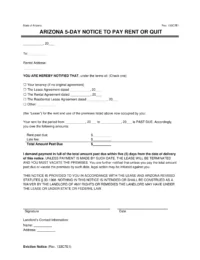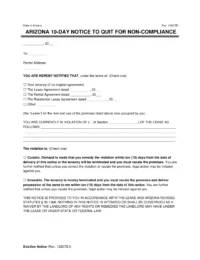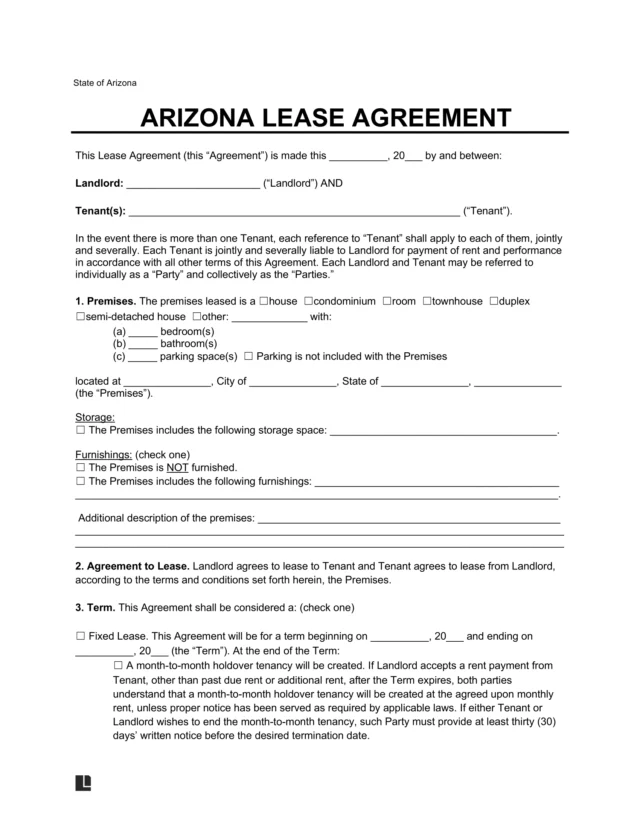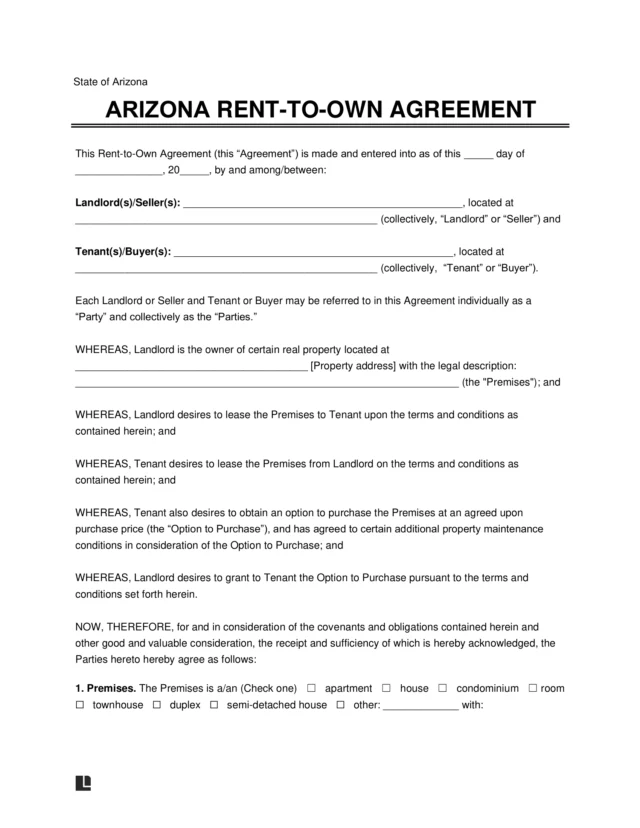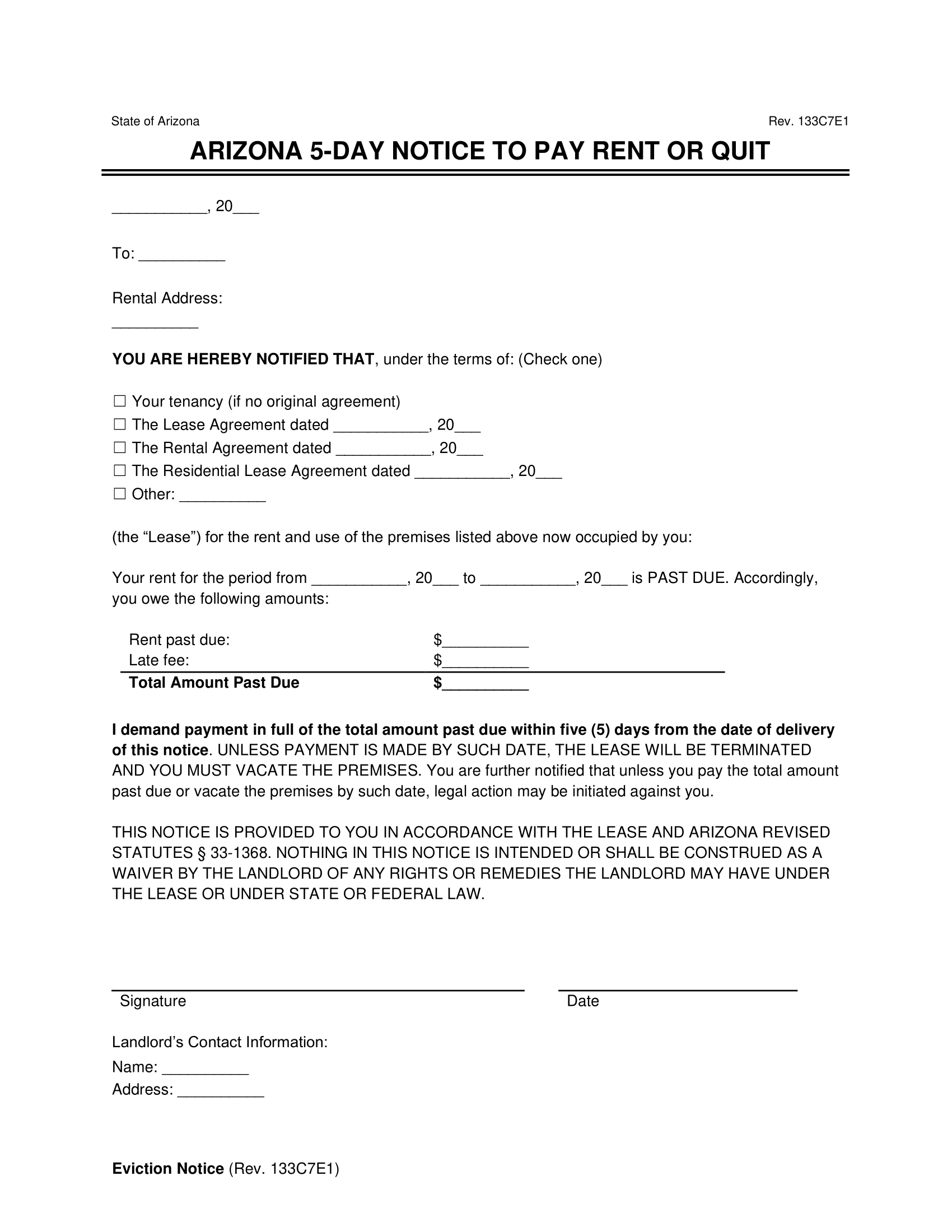Understanding Eviction Notices in Arizona
Before starting a court eviction, Arizona landlords must first serve tenants with a written notice. The type of notice depends on the reason — such as unpaid rent, lease violations, or ending a month-to-month rental.
Our document builder helps landlords create a custom Arizona eviction notice, step-by-step. When complete, download your form as a PDF or Word document.
Types of Eviction Notices in Arizona
Arizona landlords must choose the correct type of eviction notice based on the lease violation and the amount of notice required by law.
5-Day Notice to Pay Rent or Quit
This notice gives tenants 5 days to pay overdue rent before the landlord can file for eviction. Arizona law requires this notice under Arizona Revised Statutes Section § 33-1368(B). A grace period of 5 days applies for paying rent after it’s due (AZ Rev. Stat. § 33-361(A)(2)).
5-Day Notice to Pay Rent or Quit
Gives tenants five days to pay rent before eviction can proceed in court.
10-Day Notice to Quit for Non-Compliance
This notice gives tenants 10 days to fix a lease violation or move out, in compliance with AZ Rev. Stat. § 33-1368(A)(2). This applies to issues like unauthorized occupants, pets, or damage to the rental unit.
10-Day Notice to Quit for Non-Compliance
Tenants have 10 days to fix the problem if they’ve broken the terms of your lease.
30-Day Lease Termination Letter
To end a month-to-month tenancy, landlords must provide a 30-day written notice under AZ Rev. Stat. § 33-1375(B). This notice doesn’t require a reason and simply ends the ongoing lease.
30-Day Notice Lease Termination
Lets a tenant know that you’re ending a month-to-month lease and they must vacate your property in 30 days.
How to Evict a Tenant in Arizona
Evictions in Arizona are governed by the Arizona Residential Landlord and Tenant Act and formal eviction lawsuits — known as Forcible Entry and Detainer actions — are handled under AZ Rev. Stat. §§ 12-1171–12-1183 of the Arizona Revised Statutes.
To legally evict a tenant, landlords must follow this process:
Step 1: Deliver the Eviction Notice
Depending on the circumstances, the landlord must deliver the appropriate eviction notice to the tenant.
Step 2: Wait for the Tenant to Act
If the tenant complies with the lease (if given the option) or moves out within the required timeframe, then the landlord doesn’t need to take further action. However, if the tenant fights the eviction notice, they must reply to the court through a Defendant’s Answer form to argue in their defense. The tenant must file the answer with the court.
Step 3: File the Initial Court Documents
If the tenant fails to cure the breach or move out, the landlord must file a Complaint and Summons with the Arizona Justice Court to begin the official eviction process. After filing these documents, the landlord must legally serve the tenant in the manner provided by the Arizona Rules of Civil Procedure.
Step 4: Attend the Court Hearing
The landlord and tenant must attend the scheduled court hearing. The landlord can ask the court to sign a judgment to evict the tenant if the tenant doesn’t appear.
Step 5: File a Writ of Restitution
Once the landlord receives a judgment, they’ll file a Writ of Restitution with the court.
Step 6: Evict the Tenant
If the court grants the Writ of Restitution, the landlord provides it to the sheriff, who can physically remove the tenant from the premises.
Related Arizona Court Forms
The following forms are specific to Arizona landlords and tenants:
- Complaint and Summons (Form Instructions): The official forms filed by the landlord requesting a court order to evict a tenant.
- Residential Eviction Information Sheet: This is a document required to open a case. It provides the court with basic information about the parties and the case submitted by the landlord.
- Defendant’s Answer: The tenant makes a response to the eviction action and raises defenses to the claims made by the landlord in the Complaint.
- Writ of Restitution: The official form submitted to the court by the landlord, requesting a court to use law enforcement to physically remove a tenant from the property from which the tenant has been evicted.

